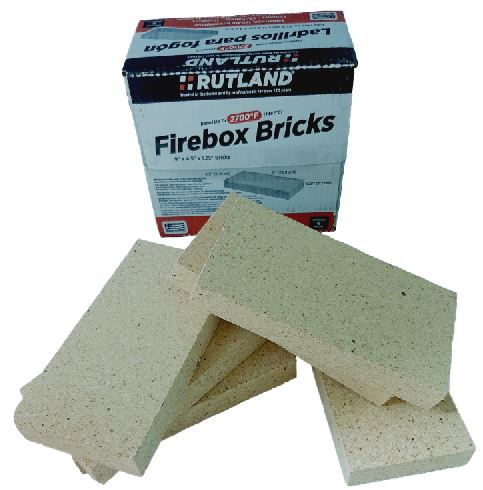If you own a wood stove, you may think the right stove design and airflow are all you need for strong and consistent fire. But one item that sits behind the flames is also important for your efficiency: your fire brick.
There are many types of brick to choose from, and you can install and replace them yourself. This article dives into the world of wood stove fire bricks and gives you all the information you need.
What is a Wood Stove Fire Brick
A wood stove fire brick is a high-density refractory brick that lines the inside of a wood stove. It reflects heat into the fire for added efficiency while protecting the wood stove casing from excessive heat exposure.
Types of Fire Brick
For home stove systems, many companies sell their own versions of bricks that come in grades of light, medium, high, and super duty, but typically you will find two main brick types on the market: insulations fire brick and refractory brick.
Insulation fire brick (IFB) is a "soft brick" and the most common for wood stoves. It isn't the longest-lasting option, but it is easier to cut and install and reflects more heat. It is typically a blend of ceramic, silica, alumina, and other metals.
Refractory brick, also called "hard brick," is more durable than soft brick and lasts longer in intense heat. That said, it doesn't reflect heat as well as "soft brick," and it is more challenging to install. This type of brick is typically a blend of alumina, bauxite, chromium, iron oxide, silica, and other materials.
Both types of fire bricks come in various sizes and shapes, but they are often cut into rectangular or square shapes that fit snugly together. They also come in whole brick or split brick options. (The split brick is half as thick.) The thicker the brick, the better the thermal mass, making full bricks more common along the back and bottom of the fireplace.
Can Your Wood Stove Fire Brick Become Damaged?
Spalling is when the surface of the bricks begins to flake and break off. This can happen if you regularly toss wood into the stove that hits the bricks, and it also occurs over time due to the expansion and contraction of the bricks from the heating and cooling process.
If you notice any spalling, repair it as soon as possible. Spalling can cause the bricks to become loose and fall, ultimately damaging your wood stove.
How Can You Prevent Damage to Your Wood Stove Fire Brick?
There are a few things that you can do to prevent spalling:
-Make sure that the bricks are properly sealed
-Use your wood stove according to the manufacturer's instructions
-Keep the level of moisture in the air low


/1003/site-assets/logo.png)


